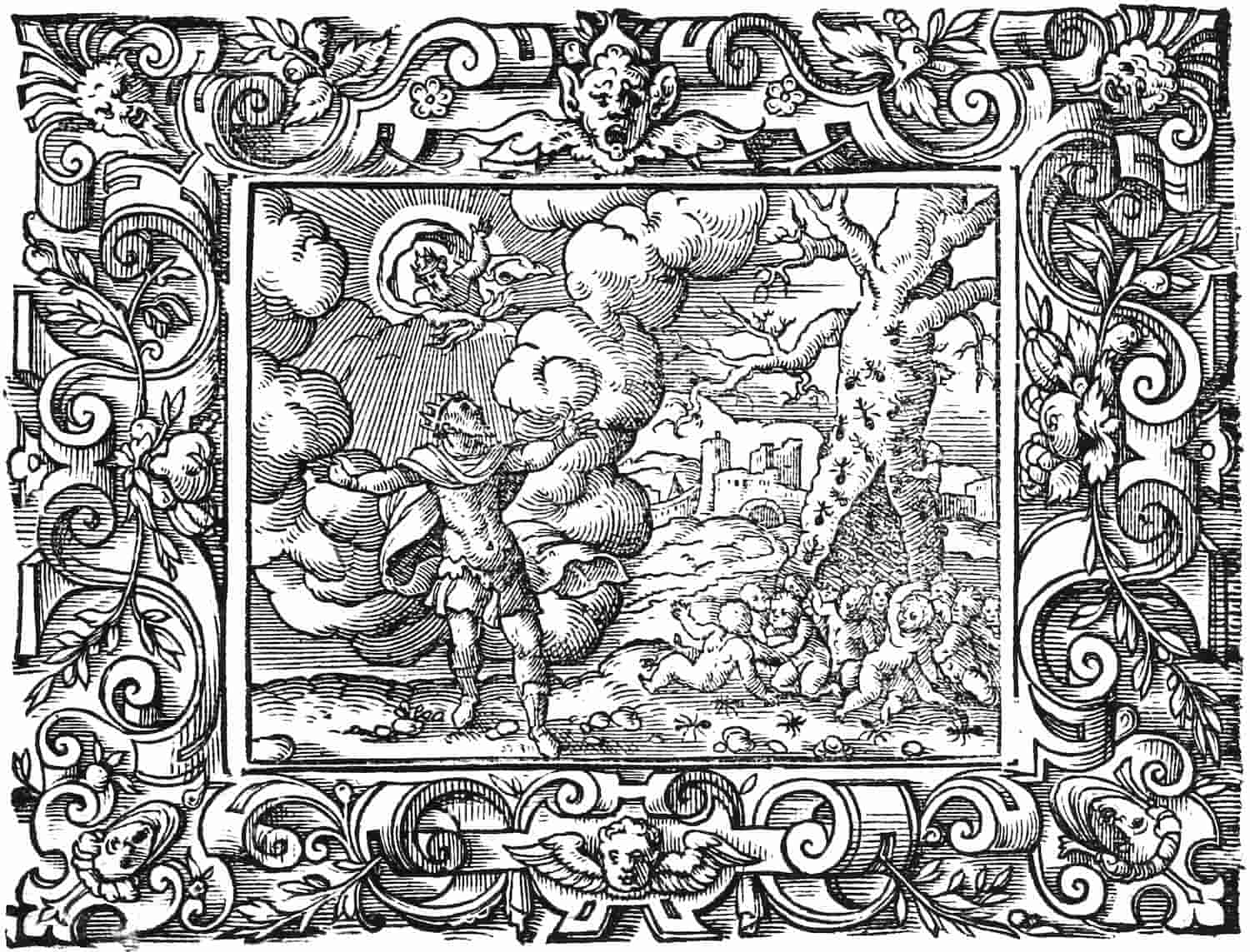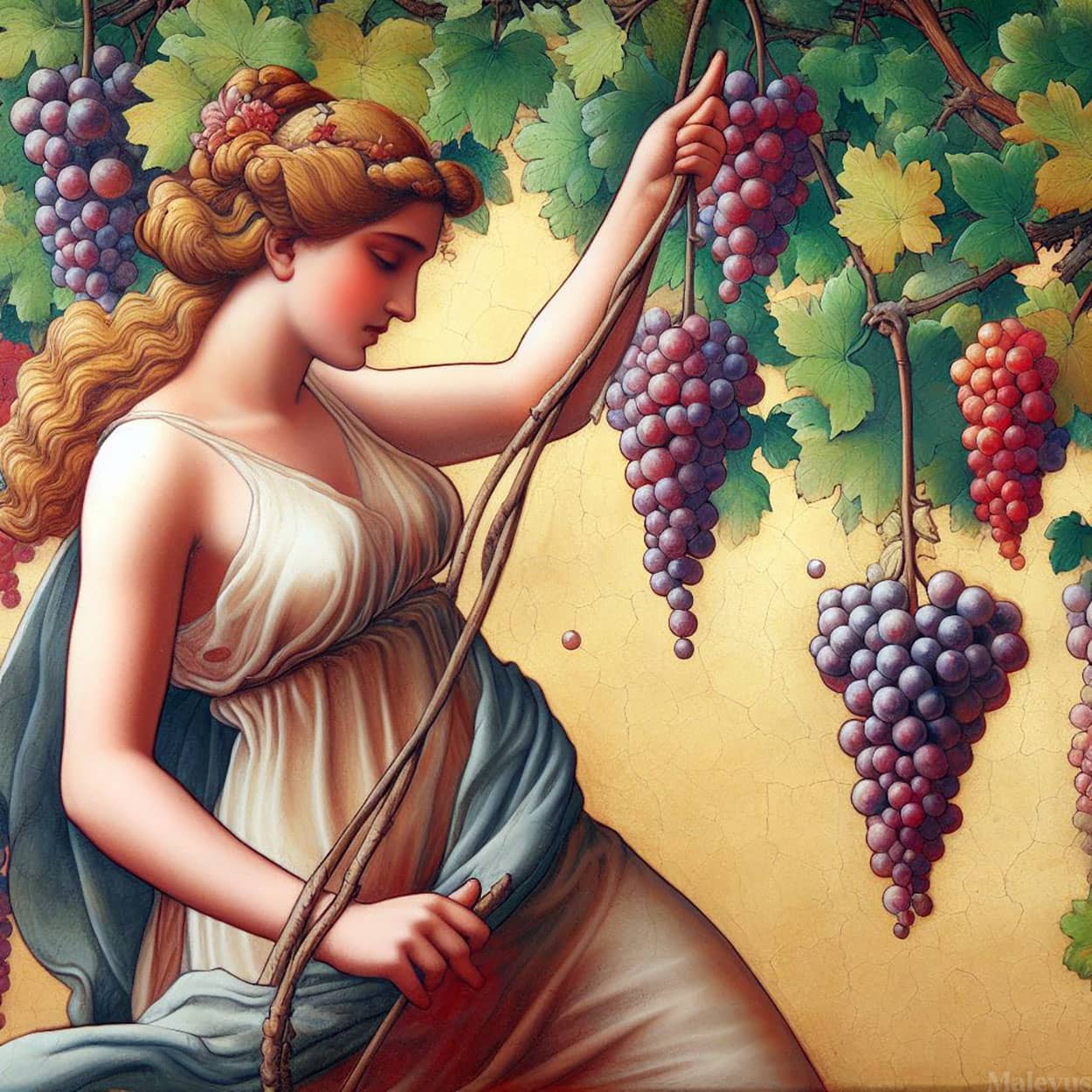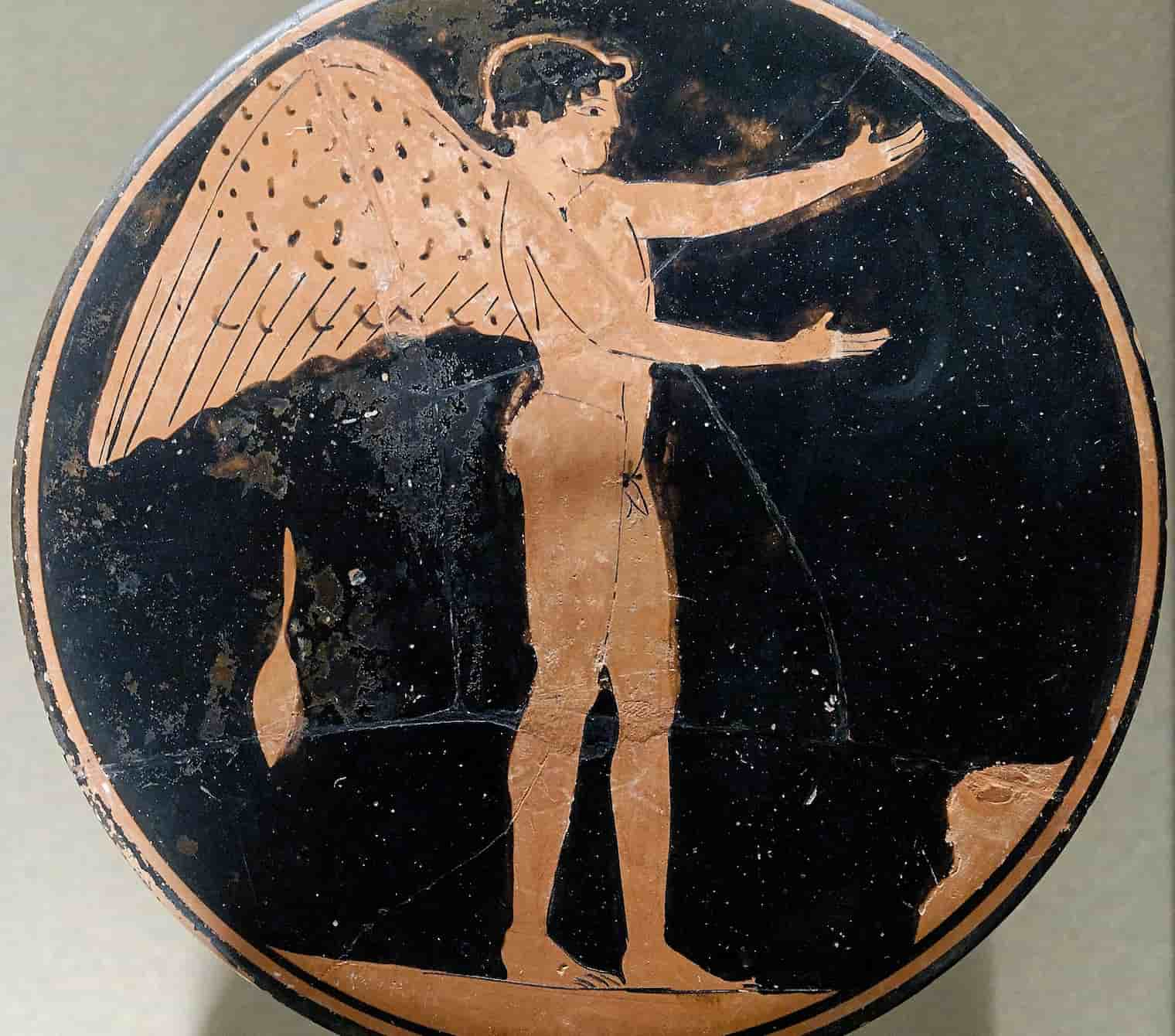The Myrmidons (Ancient Greek: Μυρμιδόνες Myrmidónes) were an Achaean tribe in southern Thessaly from the time before the Dorian migration. They are primarily known from Greek mythology as a Phthiotic people, residing around Phthia and Larisa Kremaste.
Greek Mythology
The eponymous ancestor of the Myrmidons is Myrmidon, a king of Phthia, the son of Zeus and Eurymedusa, a princess of Phthia who was seduced by Zeus when he took the form of an ant. An etiological myth about their origins, based on their supposed etymology — in ancient Greek, the name was interpreted as “ant-people,” from murmekes, “ants” — was first mentioned in Ovid’s Metamorphoses, in which the Myrmidons were simply worker ants on the island of Aegina.
This version of the myth refers to Aeacus, son of Zeus and Aegina, the goddess of the island of Aegina. After being born on the island of Aegina, he found himself alone. When, during his adolescence, loneliness began to weigh on him, Zeus transformed the ants on the island into men and women, forming the Myrmidon people. They were the first people to build ships. It seems that the two versions of the myth do not speak of the same people.
A final version of the myth mentions King Aeacus, the ruler of Aegina. After witnessing his entire people die from illness, the king prays to the gods to repopulate his kingdom. Zeus grants his favor and transforms the ants on the island into men and women.
The Myrmidons are considered powerful soldiers. Their mere presence could single-handedly turn the tide of a significant battle when they stood alongside other Greek soldiers. For example, during the Trojan War, Achilles arrives with the Myrmidons at the Greek camp to drive back the Trojans to the walls. After Achilles’ death, the Myrmidons served under Agamemnon.
Homer, Zeus, Troy, and Myrmex
In Homer’s Iliad, it is described how, under the leadership of Peleus’ son Achilles, the small army of Myrmidons marches into the battle of Troy, showcasing themselves through unquestioning obedience, bravery, and superior combat prowess. They wear black armor and shields and play a crucial role in the fall of Troy.
After the war, Neoptolemus, the grandson of Peleus, brings the Myrmidons back to their homeland.
The Iliad names the following five leaders of the Myrmidons: Menesthius, Eudorus, Peisandros, Phoinix, and Alcimedon.
According to one tradition, the Myrmidons are descendants of the eponymous ancestor King Myrmidon of Phthia (Phthiotis), a son of Zeus and the “far-seeing” Eurymedusa, a princess of Phthia. She was seduced by Zeus in the form of an ant (μύρμηξ myrmēx), hence his name. Others say that Myrmex was the name of Eurymedusa’s mortal husband, and Zeus assumed his form to approach her. His wife was Peisidike, daughter of Aiolos and Enarete, with whom he fathered Actor and Antiphus (who was the first to invite Peleus to stay in Thessaly). Hyginus also attributes to him two daughters, Ischylla and Eupolemia, and Aelianus another son, Erysichthon.
According to a legend about their origin, they once lived on the island of Aegina, whose soil was fertile but extremely stony and barren on the surface. The inhabitants, like ants, diligently dug through the earth to make it arable and spread it over the stones to create cultivable areas. They also lived underground in caves, similar to ants. They then joined Peleus when he was banished from there by his father Aiakos. In Phthia, Peleus was received by King Eurytion, the son of Actor, who cleansed him of his sins and gave him his daughter Antigone along with a third of his land.
The interpretation as “ant-people” (μύρμηκες mýrmēkes, literally “ants”) is first mentioned in Ovid’s Metamorphoses. According to this, the name derives from Zeus once granting the island of Aegina new inhabitants at the request of Aiakos. Zeus created them from ants since the island had been deprived of its original inhabitants by a plague sent by the vengeful Hera. Ovid seems to have borrowed this version from the Greek historian Thucydides, who described a plague in Athens.
The Aeginetan myth of ants being transformed into humans by Zeus—for the sake of his son Aiakos (Αιακός, from Ionic αἶα “earth”), the husband of Endeis (Ἐνδηΐς Endēïs, from ἐν and Doric δᾶ “earth”)—is originally independent of this Zeus-Myrmidon lineage and aims to mythically establish the autochthony of the Aeginetan Aiakids by deriving them from the earth creature. The Thessalian lineage originally knew nothing of the ant etymology, just as the Aeginetan saga does. Nevertheless, the harbor Myrmex on the famous Magnesian coast of Thetis-Sepias (Σηπιάς) suggests a connection.
However, the coherence of the Thessalian Achaeans, the mythical Myrmidons, with the Aeginetan Achaeans is established, and the likely origin of the former comes from the latter.
Legacy
In pre-industrial Europe, the term “myrmidon” takes on a similar connotation to the word “robot,” due to the mythical soldiers’ loyalty to their leader. The Oxford English Dictionary indicates that later on, it comes to mean a “hired ruffian” or a “brute à gages.”
Literature
- In Edmond Rostand’s Cyrano de Bergerac: “I warn you, dear Myrmidon, that at the end of the dispatch, I strike!”
- In Voltaire’s Letter 12 from the Correspondences with the King of Prussia: “A swarm of geometric Myrmidons already persecutes the fine arts, prescribing laws to degrade them.”
- In Molière’s Dom Juan or The Feast with the Statue (Act I, Scene 2): “It is indeed for you, little worm, little Myrmidon that you are (I speak to the master I have mentioned), it is indeed for you to want to meddle in turning into mockery what all men revere!”
- In the Scottish writer Tobias Smollett’s The Adventures of Peregrine Pickle, the crew of Commodore Trunnion’s garrison is called Myrmidons due to their fierce loyalty.
- In Grant Morrison’s comic The Invisibles, humans serving the Archons and who have undergone modifications are called Myrmidons.
- In the manhwa Chonchu, the Myrmidons are a warrior tribe known for their strength and spirit. They are fierce warriors who delight in battle.
- In Garth Nix’s novel Shade’s Children, extraterrestrials create soulless human children called Myrmidons who become soldiers.
- In Jack Vance’s The Languages of Pao, humanity is artificially divided into three castes by imposing linguistic and cultural barriers; the warrior caste is called the Myrmidons.
- They are mentioned twice in the Wonder Woman comic, first when Wonder Woman travels to the mythological past and second in the Artemis/Requiem mini-series, where they are seen as servants in the Greek Underworld, watching over the dead.
- In George Sand’s History of My Life, Maurice writes to his mother about his fever: “It was a very slight fever, a Myrmidon of fever.”
Cinema
- In the film Troy (2004) by Wolfgang Petersen, the Myrmidons form the shock troops of King Agamemnon and are led by Achilles (Brad Pitt). They are clad in black from head to toe.
Video Games
The term “Myrmidon” is often used in video games, particularly in role-playing games. It is a title frequently given to character classes and enemies, and sometimes even the name of a tool or vehicle.
- In World of Warcraft, Naga Myrmidons are blue-skinned naga warriors armed with formidable tridents.
- In the video game Age of Mythology (partly based on Greek mythology), a special unit of the Greek civilization is the Myrmidon, who becomes more powerful when facing units from non-Greek civilizations.
- In the game League of Legends, a Myrmidon skin is available for the champion Pantheon, paying homage to the legend with its beauty and elegance.
- In Dragon’s Dogma, the player character’s companions are nicknamed Myrmidons. They lack feelings or free will and only obey the main protagonist’s orders.
- In The Elder Scrolls IV: Oblivion, the fourth rank of fighter in the Arena quest is named “Myrmidon.”
- In Assassin’s Creed Odyssey – Fate of Atlantis, soldiers are referred to as “Myrmidons.”
- In the Fire Emblem series of video games, Myrmidons are a class of fighters mastering the art of the sword, regularly delivering critical hits.
Others
- The Royal Navy had several ships named “HMS Myrmidon.”
- A species of butterfly is called Colias myrmidone.
- The “Myrmidon Club” is a private dining society at Merton College, Oxford, founded in 1865. It is possibly the oldest at the University of Oxford. Max Beerbohm was a member; the club called La Junta in his novel Zuleika Dobson is probably based on “The Myrmidons.” Other famous members include Lord Randolph Churchill and Andrew Irvine.






